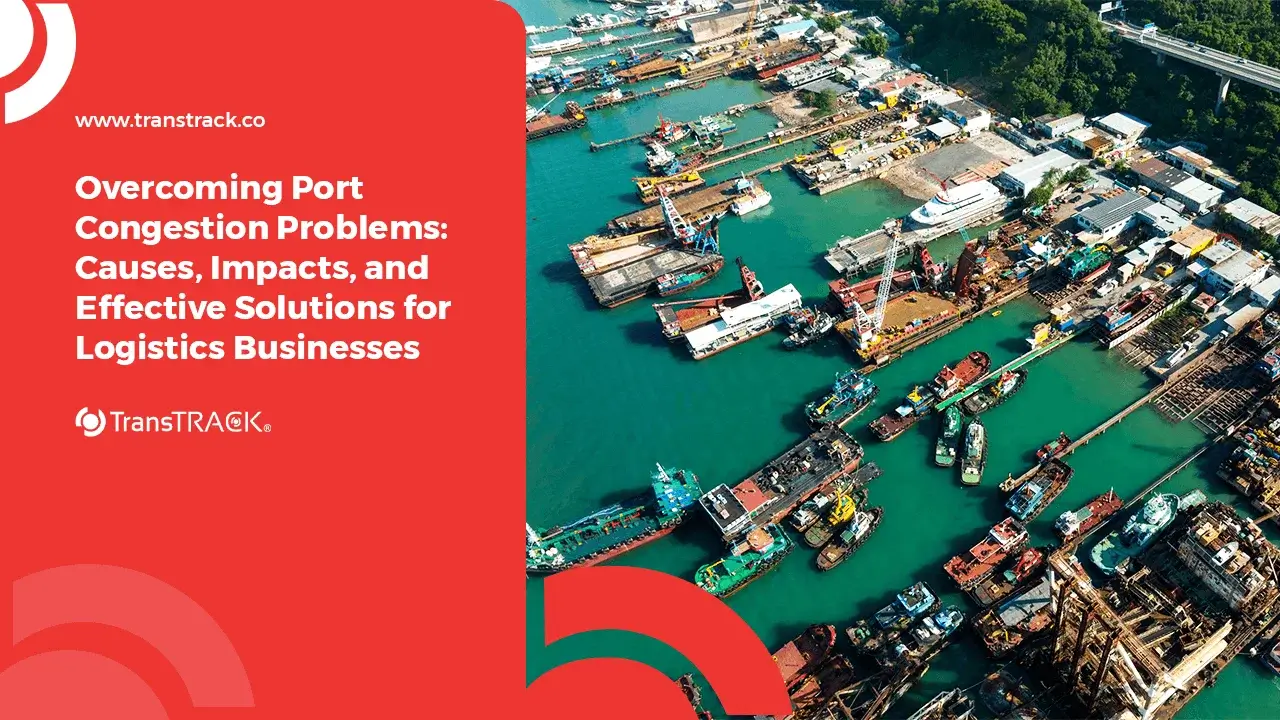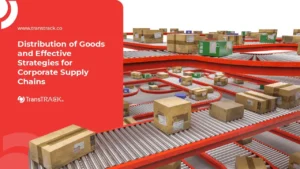Overcoming Port Congestion Problems: Causes, Impacts, and Effective Solutions for Logistics Businesses
Posted on October 24, 2025 by Nur Wachda Mihmidati

Port congestion is a serious problem that often hinders the smooth distribution of goods and reduces national logistics efficiency. Container backlogs, truck queues, and lack of coordination between ships, operators, and drivers are the main causes of slow loading and unloading activities. If not addressed promptly, port congestion can increase logistics costs, reduce fleet productivity, and disrupt the global supply chain.
Check out the full explanation togetherTransTRACK below this!
What is Port Congestion and How Does it Impact Economic Activity?
Port congestion is a condition in which the flow of ships, containers, and vehicles entering and leaving a port area experiences significant obstacles or delays. This situation not only reduces logistics efficiency but also directly impacts the national economy. To address congestion, industry players need to understand how port congestion can reduce business competitiveness and productivity.
In the context of a tightly connected global economy, delays at ports can have a domino effect on the supply chain. That’s why understanding the causes and finding ways to address bottlenecks is crucial.
Main Causes of Congestion at Ports
Each port presents unique operational challenges. However, most problems stem from suboptimal coordination, infrastructure, and logistics management systems, necessitating evaluation. Here are some of the main causes of frequent port congestion:
Container and Truck Stacking in Terminal Area
Container and truck backlogs occur due to limited terminal capacity and a lack of proper planning for cargo movement. When the flow of goods is unbalanced between arrivals and departures, long queues are inevitable. To address congestion, optimizing container space and movement systems is a must.
Lack of Coordination between Ships, Operators, and Truck Drivers
Without proper coordination, ship and truck schedules are often out of sync, resulting in long wait times. This leads to operational stagnation and congestion in port areas. An integrated digital system can help address congestion by speeding up communication between parties.
Manual Administrative Processes Slow Down Vehicle Entry and Exit Flow
Many ports still use physical documents for verification and release of goods. This manual process slows efficiency and lengthens truck queues at gates. Digitizing documents is a strategic step to address congestion and expedite logistics flows.
Lack of an Efficient Scheduling System
The lack of a proper scheduling system allows vehicles to arrive simultaneously without proper planning. This leads to queues and congestion at key access points. By implementing a time-based system and technology, ports can significantly alleviate congestion problems.
Costs and Business Impacts of Port Congestion
Port congestion not only causes long wait times but also increases logistics costs and reduces business efficiency. To address this congestion problem, companies need to understand the financial impact of delays. These impacts can be felt from upstream to downstream in the supply chain, including transportation fleets, port operators, and end consumers. Here are some of the main impacts of congestion on businesses:
Delays in Goods Delivery and Increased Logistics Costs
When goods are held up at ports, delivery times become uncertain and storage costs increase. This results in dissatisfied customers and soaring operational costs. A sound strategy to address congestion issues will significantly reduce unnecessary additional costs.
Decline in Fleet Productivity and Vehicle Utilization
Congestion causes vehicles to wait longer for loading and unloading. This reduces fleet utilization and extends vehicle turnaround times. By taking appropriate steps to address congestion, companies can significantly improve fleet efficiency.
Lost Business Opportunities Due to Late Delivery
Distribution delays lead to contract cancellations and customer switching to other providers. For fast-moving businesses, distribution speed is paramount. Therefore, addressing bottlenecks must be a priority in long-term business strategies.
Business Strategies to Overcome Traffic Congestion Problems
Maintaining a smooth supply chain and operational efficiency requires a collaborative strategy involving all parties in the port ecosystem. Technological innovation and digital systems play a crucial role in sustainably addressing congestion issues. Here are some business strategies proven effective in reducing port congestion:
Implementation of Truck Appointment System (TAS) for Vehicle Queue Management
TAS helps organize truck arrivals based on pre-scheduled times, allowing for more controlled traffic flow. This system allows ports to efficiently address congestion at entry and exit points.
Use of Port Transport System to Synchronize Ship and Truck Schedules
The Port Transport System enables synchronization of schedules between ships, warehouses, and land transportation fleets. This system ensures timely loading and unloading, thereby helping to alleviate congestion in terminal areas.
Data Integration Between Stakeholders Through Digital Platforms
Digital platforms enable real-time data sharing between port operators, logistics companies, and the government. This integration allows for faster and more accurate operational decisions. This effort is highly effective in addressing congestion issues.
Collaboration between Port Operators, Transport Companies and Port Authorities
Congestion cannot be solved by one party alone. Close cooperation between all stakeholders is required to develop an integrated system. This collaboration is key to addressing the congestion problem comprehensively.
Conclusion
Port congestion is a major challenge in modern logistics. However, with the right strategy, collaboration between stakeholders, and the application of modern digital technology, companies can effectively address congestion. Successfully managing the flow of goods at ports will improve operational efficiency, lower costs, and strengthen business competitiveness.
Use TransTRACK’s Truck Appointment System—an integrated system that manages the entire loading and unloading process or truck queues at ports, allowing you to improve port logistics efficiency and operations to a higher level.

FAQ
Why is it important for logistics companies to address congestion at ports?
Because congestion directly impacts delivery times, logistics costs, and a company’s reputation, by strategically addressing congestion issues, companies can improve reliability and customer satisfaction.
How do digital solutions like TAS help ports?
The TAS system manages truck arrival schedules and prevents vehicle congestion. This technology has been proven to help address congestion problems by improving operational efficiency at terminals.
What is the first step for companies to reduce port congestion?
The first step is to conduct a comprehensive evaluation of the logistics flow and begin implementing digitalization. With a data-driven approach, companies can more easily address congestion issues in a measurable manner.
How does congestion affect the supply chain of large companies?
Congestion slows the distribution of raw materials and finished products, impacting the entire supply chain. Serious efforts to address congestion issues will help maintain the stability of large companies’ supply chains.
Recent Post
Topic :
Recommended Articles

 Bahasa Indonesia
Bahasa Indonesia








